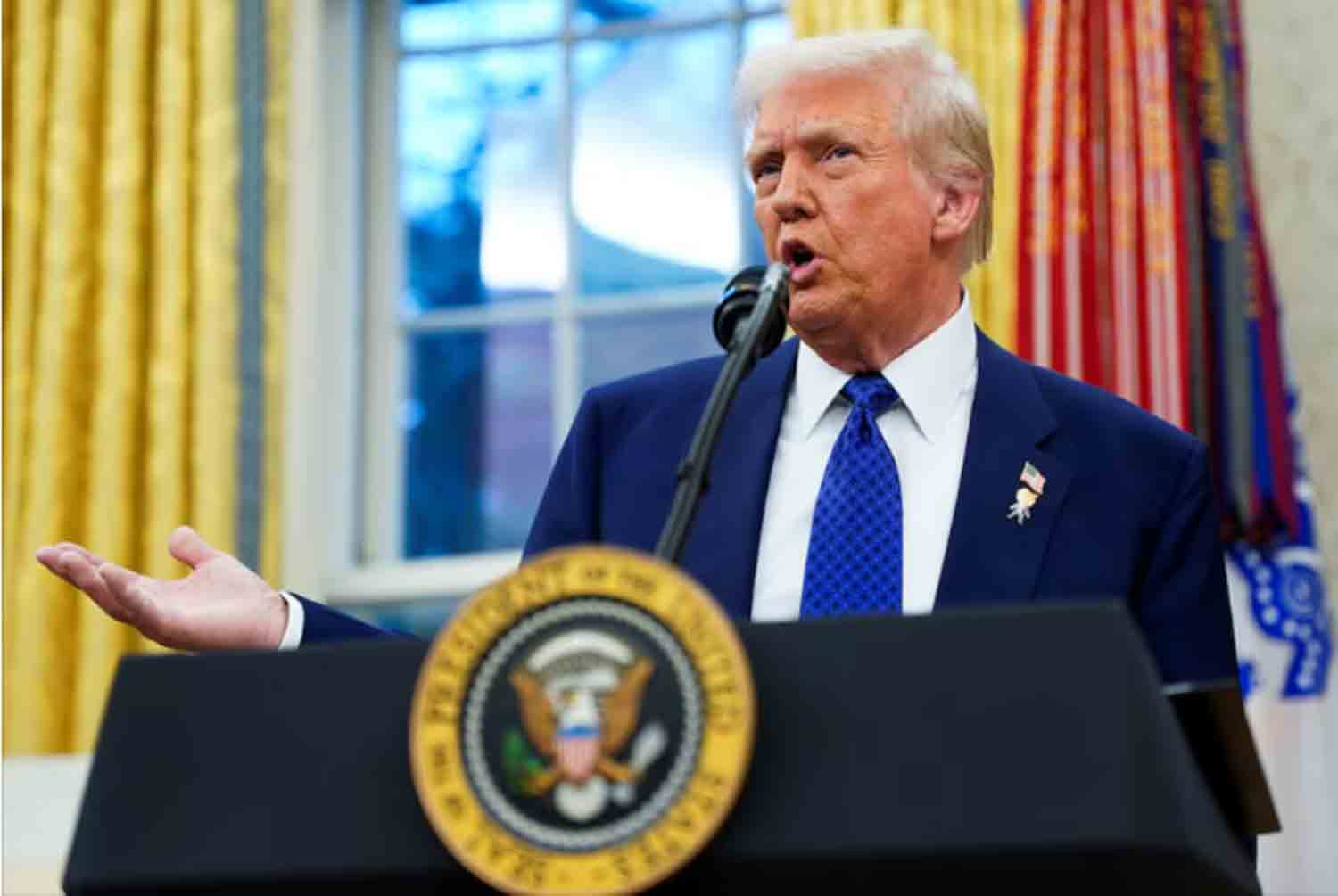One month prior to the Hague summit, NATO‘s leading military official stated that there are currently no signs indicating that the United States will withdraw its forces from the alliance’s defense strategies to redeploy them to the Indo-Pacific region.
Nevertheless, Adm. Giuseppe Dragone, who leads NATO’s senior military board, emphasized the necessity for the alliance to prepare for a potential shift in U.S. focus away from Europe. ‘A crucial aspect would be to plan for that in advance,’ Dragone remarked regarding any alterations in U.S. military positioning. ‘This would enable the alliance to adapt and recalibrate.’ The admiral, who assumed his role in January, made these comments during a visit to Washington alongside other NATO leaders to engage with Pentagon officials, including Vice Chairman of the Joint Chiefs of Staff Adm. Christopher Grady.
In recent months, the Pentagon has highlighted the threat posed by China, overshadowing the risks associated with Russia, which is now over three years into its invasion of Ukraine.
A draft U.S. defense strategy, parts of which were leaked in March, heavily referenced a report from the Heritage Foundation authored by a current senior Pentagon policy official. This document suggested that the U.S. should pinpoint its forces allocated to NATO defense plans that could also serve to deter a potential invasion of Taiwan. Consequently, the Pentagon would reposition those units closer to Asia, compelling European nations to bridge the gap.
Dragone mentioned that he had not yet received confirmation regarding the Pentagon’s implementation of those plans, but he indicated that European nations might eventually compensate for the reduction of some U.S. military forces in the region, which includes air defense systems, electronic warfare capabilities, strategic airlift, and drones.
Following the onset of the war in Ukraine, NATO member countries have increased their defense budgets, with 22 out of 32 members now meeting the 2% of GDP benchmark. U.S. President Donald Trump has consistently argued that this figure is insufficient, advocating for a 5% target. NATO Secretary General Mark Rutte has reportedly proposed a new defense spending target of 3.5%, with an additional 1.5% allocated for other security-related initiatives, to be presented at the Hague Summit in June.
Dragone confirmed that this allocation is under discussion, although he was less clear about the timeline for its implementation or the specific purposes for the additional funding. ‘The final goal will be 3.5 plus 1.5, depending on their decisions, but the method of achieving it should be a national responsibility,’ Dragone stated. ‘I believe NATO should remain adaptable and strive for realism, even if it requires assertiveness.’
Italy, Dragone’s home country, is among the 10 NATO members that do not meet the 2% defense spending threshold, allocating only 1.49% of its GDP to defense in 2024. Prime Minister Georgia Meloni asserted in April that Italy would achieve the necessary target this year. These budget increases must also align with the military expansion that Russia has undertaken during the conflict in Ukraine, as it adjusts its economy to endure significant losses in both equipment and personnel.
Dragone noted that Russia is reportedly losing between 1,000 and 1,200 troops daily on the front lines but will continue to rebuild its military force, even if a peace agreement is reached. At a minimum, he suggested that Russia would aim to restore its military capabilities to pre-war levels from 2022, despite its failure to accomplish its objectives during the invasion. The quickest timeline for Russia to regain that strength could be three years, although a more realistic estimate would be five to seven years, according to Dragone.
Discover more from Defence Talks | Defense News Hub, Military Updates, Security Insights
Subscribe to get the latest posts sent to your email.





